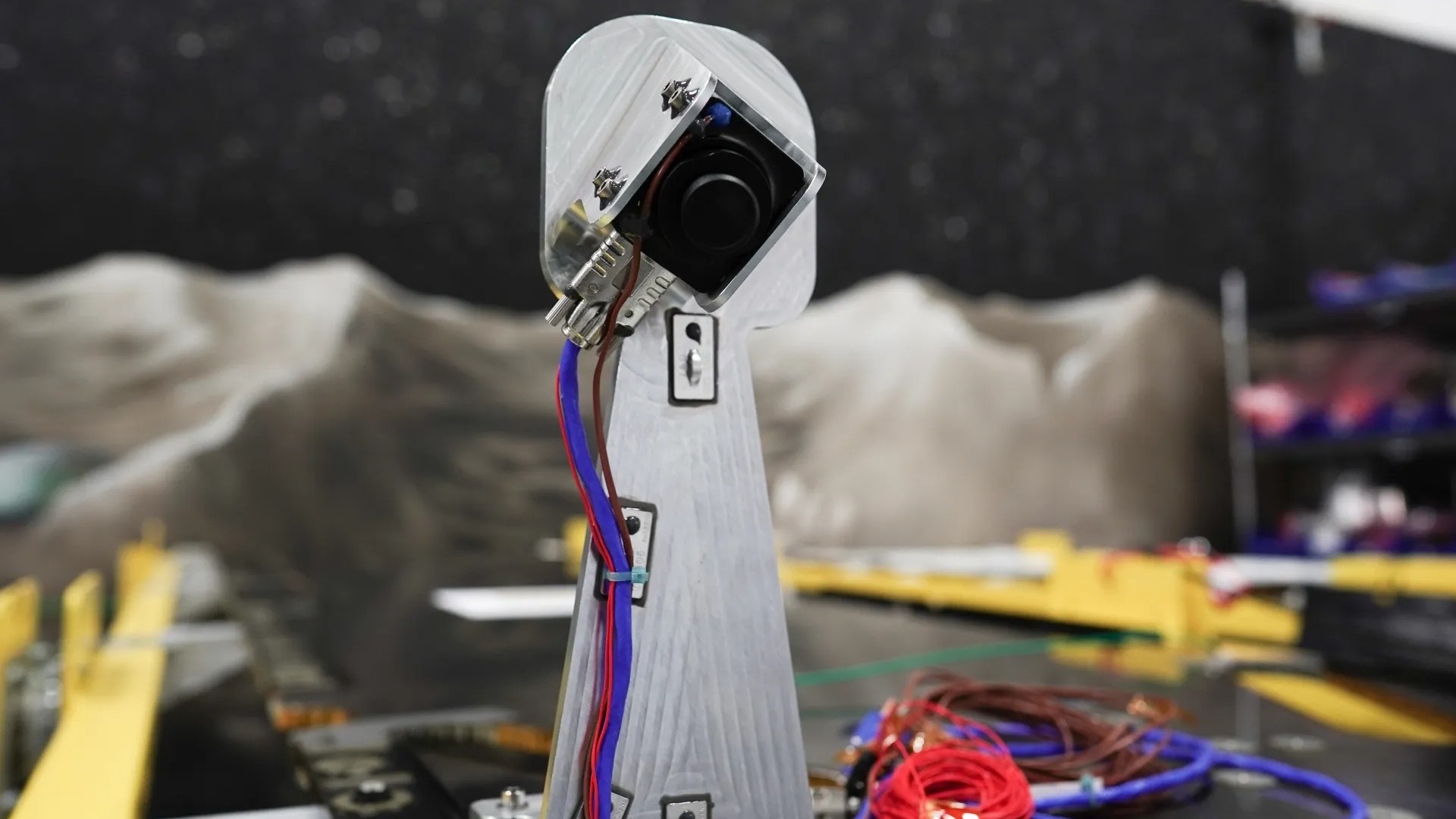Intuitive Machines moon lander to carry tiny NASA cameras to study lunar surface (video)
Data from the lander's interaction with the moon could inform future missions.
A lunar lander set to launch next week will have a special set of four eyes to track how the spacecraft's engine plume interacts with the lunar surface.
The Intuitive Machines's IM-1 Nova-C moon lander is currently set to launch on a SpaceX Falcon 9 rocket from Florida's Cape Canaveral Space Force Station on Valentine's Day (Feb. 14) at 12:57 a.m. EST (0557 GMT).
The lander, named Odysseus, carries 12 payloads, half of which are commercial and the others from NASA. One of these is the Stereo Cameras for Lunar Plume-Surface Studies (SCALPSS), developed at NASA's Langley Research Center in Hampton, Virginia, and placed around the base of the tall, hexagonal cylinder lander.
Related: SpaceX targeting Feb. 14 for launch of Intuitive Machines IM-1 private moon mission

SCALPSS 1.0 will be active during the lander's descent onto the moon and observe how the lunar surface is impacted and changed by Odysseus's engines. The experiment utilizes stereo photogrammetry, where overlapping images from the cameras are used to create a 3D view of the lunar surface, allowing for detailed analysis of surface changes after the landing.
The findings will help scientists and engineers predict the effects of landings on the lunar surface — an important issue for NASA's Artemis program which aims to return humans to the moon and establish a long term lunar presence. Concerns include potential erosion or damage to nearby equipment due to a lander's plume.

"If we're placing things — landers, habitats, etc. — near each other, we could be sand blasting what's next to us, so that's going to drive requirements on protecting those other assets on the surface, which could add mass, and that mass ripples through the architecture," Michelle Munk, principal investigator for SCALPSS and acting chief architect for NASA's Space Technology Mission Directorate at NASA Headquarters, said in a NASA statement. "It's all part of an integrated engineering problem."
Breaking space news, the latest updates on rocket launches, skywatching events and more!
It will take the SCALPSS team at least a couple of months to process the images, verify the data, and generate 3D digital elevation maps, according to NASA. But the hard work will help planning future missions and ensuring the safety of lunar landings.
The IM-1 Nova-C lander will be attempting to become the first-ever private spacecraft to successfully land on the lunar surface.
It follows the failed Israeli firm SpaceIL's Beresheet and Japanese company ispace's Hakuto-R lunar landing missions in 2019 and 2023, and the loss of Astrobotics's Peregrine early this year. Peregrine suffered an ultimately mission-ending fuel leak shortly after separating from its Vulcan Centaur rocket upper stage.
Like Peregrine, Odysseus is part of NASA's Commercial Lunar Payload Services program (CLPS). The initiative is part of NASA's wider Artemis program.
Another CLPS mission — Firefly Aerospace's Blue Ghost — is scheduled to carry SCALPSS 1.1 later this year. This upgraded version will feature two additional cameras.
Join our Space Forums to keep talking space on the latest missions, night sky and more! And if you have a news tip, correction or comment, let us know at: community@space.com.

Andrew is a freelance space journalist with a focus on reporting on China's rapidly growing space sector. He began writing for Space.com in 2019 and writes for SpaceNews, IEEE Spectrum, National Geographic, Sky & Telescope, New Scientist and others. Andrew first caught the space bug when, as a youngster, he saw Voyager images of other worlds in our solar system for the first time. Away from space, Andrew enjoys trail running in the forests of Finland. You can follow him on Twitter @AJ_FI.
-
KenK It will be interesting to hear, and see, if this worked during the landing....Reply
Stereo Cameras for Lunar Plume-Surface Studies (SCALPSS)
/intuitive-machines-nova-c-moon-lander-tiny-nasa-cameras-scalpss
Video description here
https://www.youtube.com/live/Dg2ffigGcYM?si=L_a_uu_tSBOhEwfv&t=1906
KenK
